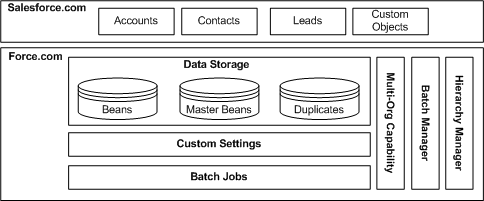Customer 360 for Salesforce
is compiled, stored, and run entirely on the Force.com environment.
Customer 360 for Salesforce
is AppExchange certified which means
Customer 360 for Salesforce
complies with the Salesforce security and code guidelines.
Customer 360 for Salesforce
has Aloha App status, which means
Customer 360 for Salesforce
tabs and objects do not count against the limits within Salesforce.
Customer 360 for Salesforce
has separate resource limits and governor limits from the Salesforce application with the exception of storage and batch job limits.
Customer 360 for Salesforce
architecture has two layers, Salesforce.com and Force.com.

